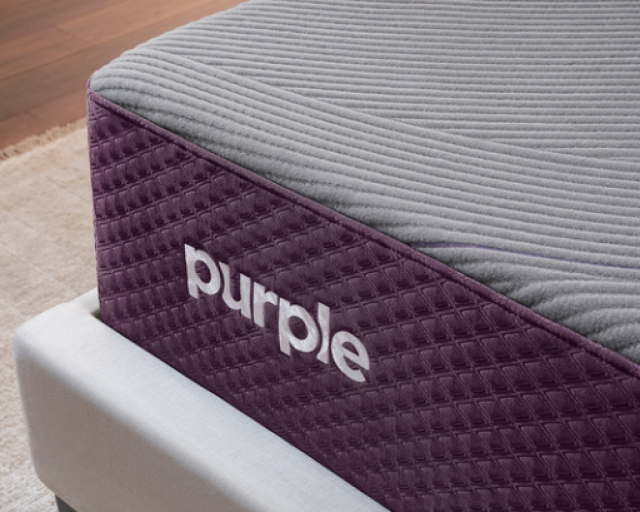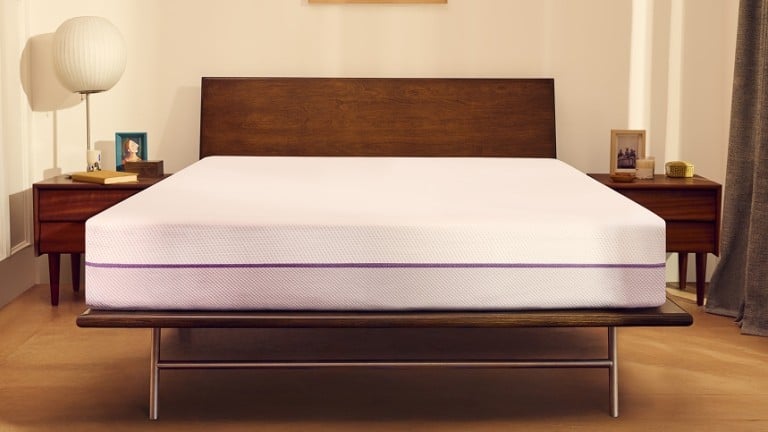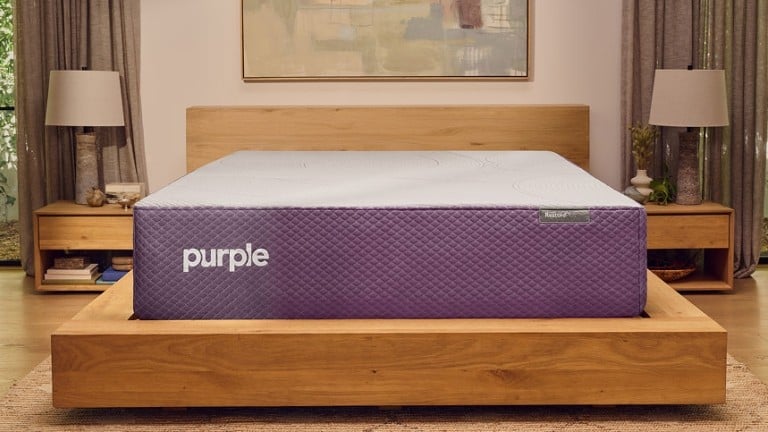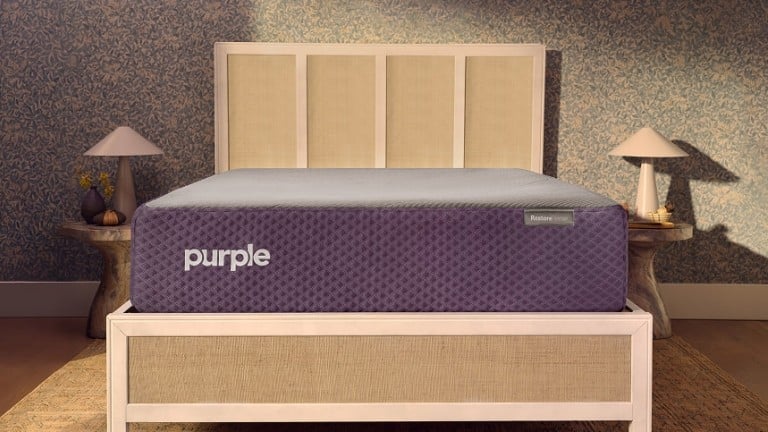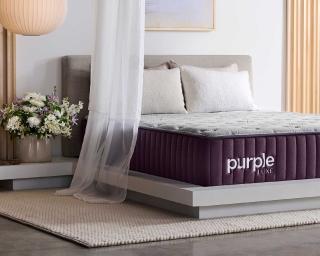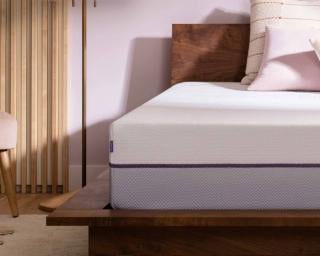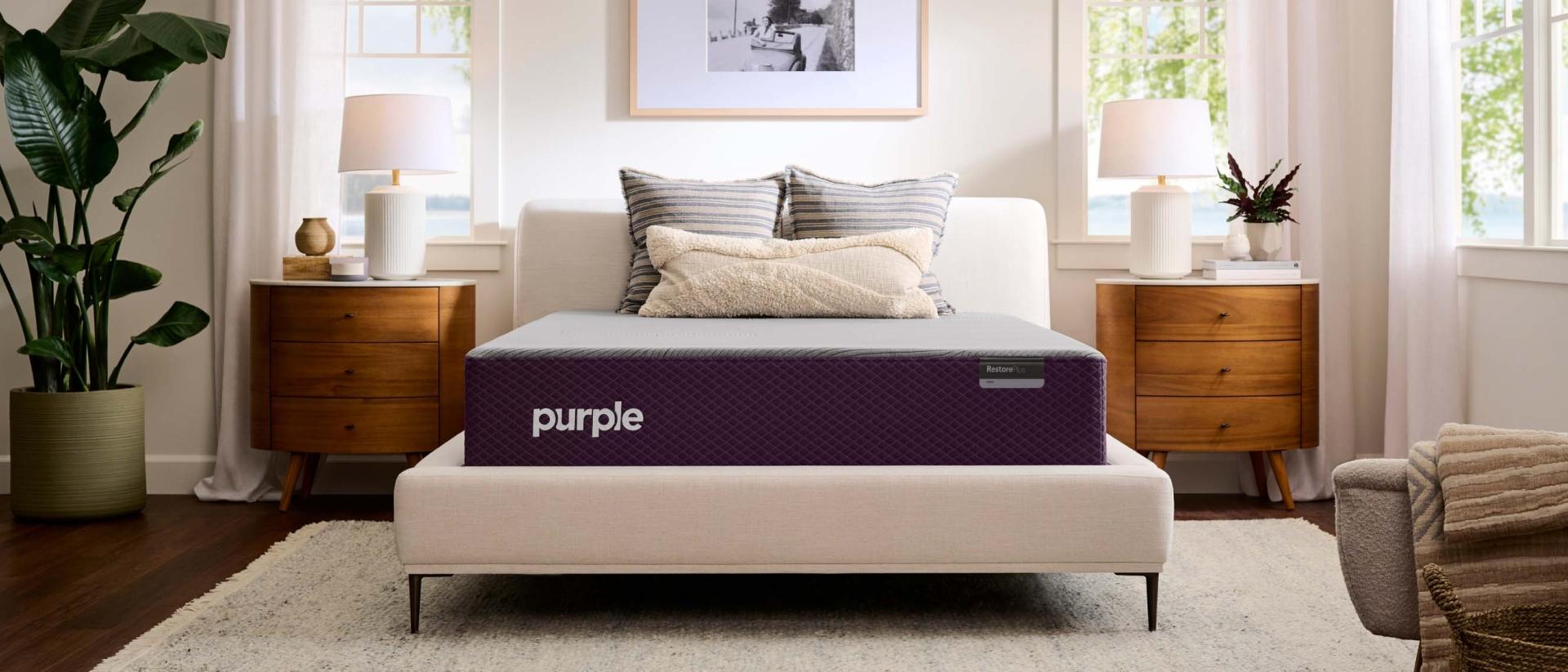
10- vs. 12-Inch Mattress: Which Is Right for You? [2025 Guide]
Key Takeaways:
- The difference between a 10- vs. 12-inch mattress is only 2 inches in thickness, but may result in unique feels, firmness, and bed height.
- With fewer materials and layers, 10-inch mattresses may feel firmer. Back and stomach sleepers commonly prefer a thinner bed.
- 12-inch mattresses may have extra comfort layers that result in a softer feel and are generally preferred by side or combination sleepers.
- The quality and construction of a 10- or 12-inch mattress factor into the specific benefits of each depth.
One reason you may be uncomfortable in bed or unable to fall asleep at night is the thickness of your mattress. Using a mattress that’s too thin or thick may result in discomfort and restlessness.
The difference between a 10- or 12-inch mattress may seem small, but that 2-inch gap could be causing common sleep issues. While there aren't uniform standards for mattress thicknesses on the market, the average thickness of most mattresses is 9 to 12 inches, with thinner and thicker options available.
So how do you choose between a 10- vs. 12-inch mattress? In this guide, we will discuss the difference between 10- and 12-inch mattresses so you can decide which fits your lifestyle and sleeping habits best.
10- vs. 12-Inch Mattress: What's the Difference?
The main difference between a 10- and 12-inch mattress is the height. While the difference is a mere 2 inches, it may impact the mattress’s feel therefore playing an important role in your decision making.
Mattress companies measure the feel and firmness of mattresses using a system called the firmness scale, rating beds from 1 to 10. One is the softest, and 10 is the firmest. These are further subdivided into levels:
- Soft
- Medium
- Firm
In general, a 12-inch mattress may provide a softer feel and better pressure relief if the extra depth comes from thick comfort layers. If the added thickness is due to thicker base layers, this will instead impact support. A thin mattress tends to feel firmer because the comfort layers are not as thick as plush, highly pressure-relieving mattresses. It’s important to note that mattress firmness greatly depends on the quality and types of materials used.
There is no one-size-fits-all formula for what firmness is considered comfortable. It depends on the sleeper and whether they prefer a firm vs. medium mattress, or something softer. For instance, someone who suffers from back pain may want a mattress of medium firmness, which will offer better support and pain relief.1
Thicker mattresses may cost more than thinner mattresses because they contain more layers designed for support and comfort, but mattress thickness alone doesn’t indicate quality.
Benefits of a 10-Inch Mattress
Are you looking for a lower or thinner mattress? Below are the pros and cons of a 10-inch mattress, though it’s important to keep in mind that quality — including your sleep quality — depends on the specific mattress. A mattress manufacturer that uses high-quality materials and technologies, for example, can produce a mattress that performs well regardless of its thickness.
Benefits | Considerations |
| Firmer feel | May offer less pressure relief |
| Lighter in weight | May feel too firm for some sleepers |
| Generally more affordable | May be too low for some sleepers |
| May fit better on bunk or trundle frames | May be difficult to get in and out of |
Benefits of a 12-Inch Mattress
Does a soft, responsive mattress sound more inviting? The table below covers some pros and cons of a 12-inch mattress. Similar to the thinner mattress, these are general tips and may not apply to all 12-inch mattresses depending on the quality of materials.
Benefits | Considerations |
| Plush feel | Heavier in weight |
| More or thicker layers for pressure relief | Generally higher price point |
| Standard depth for most sheets and bedding | May feel too soft for some sleepers |
| May be too high for some sleepers |
What To Consider When Choosing a 10- or 12-Inch Mattress
Some sleepers are content with sleeping on thinner mattresses, while others require thicker mattresses to get a good night’s sleep. Two inches may not sound like much when choosing between a 10-inch mattress and a 12-inch one, but it can make a world of difference.
Below are several factors to consider when choosing between a 10- or 12-inch mattress:
1. Body Type and Weight
While comfort is king when it comes to getting a good night’s sleep, your weight and physique can determine what mattress is best suited for you.
Heavier individuals may feel more supported and comfortable sleeping on a mattress that’s at least 12 inches thick. Similarly, taller sleepers prefer a 12-inch mattress vs. a 10-inch, as a thicker mattress naturally equals a taller bed. If you are on the shorter side, getting out of bed may be challenging if you choose a tall mattress. Sleepers of average height and weight may find a 10-inch mattress just as comfortable.
2. Sleeping Position
When choosing a mattress, the way you sleep matters. Both 10- and 12-inch mattresses can support any sleep position. However, some sleepers may feel more comfortable on a thinner or thicker mattress depending on how they sleep. Here are some general recommendations:
- Side sleepers need mattresses that support their shoulders and hips, so a deeper mattress with more comfort layers might be better for them. At a minimum, they should opt for a mattress that’s 10 inches or thicker to prevent shoulder pain from sleeping on their sides.
- Back sleepers should choose a mattress with a thinner comfort layer and a thicker support layer to support the natural alignment of the neck and spine as they sleep. It should be at least 8 inches thick.
- Stomach sleepers can also benefit from a mattress with thinner comfort layers and thicker support layers to prevent neck and spinal misalignment. Combined, the layers should be 8 inches or thicker.
- Combination sleepers tend to change their sleeping positions throughout the night and would benefit from a mattress that’s at least 10 inches thick.
3. Preferred Mattress Firmness
Mattress firmness refers to how soft or hard a mattress feels, which can be impacted by the thickness of the mattress. Do you like plush or firm mattresses? Do you want a mattress with a faster response time or a slower response time?
Mattress firmness and depth both depend on the layers inside, with most mattresses typically comprised of two to three layers:
- Comfort layer: A comfort layer is the top part of the mattress that lies closest to the body. Mattress firmness is primarily determined by the comfort layer, which ranges from 1 to 7 inches.
- Support layer: Known as the base layer or the core of the mattress, the support layer lies directly beneath the comfort layer, provides the mattress with durability, and aids with spinal alignment. The support layer is the thickest part of the mattress.
- Transition layers: Some mattresses have extra layers known as transition layers, which have functions like additional support or cooling technologies.
If you opt for a 12- vs. 10-inch mattress, you’ll get extra cushioning that may feel softer when you sleep, whereas a 10-inch may feel firmer.
4. Physical Health Conditions
If you suffer from mobility issues or back or joint pain, the 2-inch difference between 10- and 12-inch mattresses can significantly impact your sleep.
A mattress that’s too low or too high can be difficult to get out of. Senior people or those with limited mobility may sleep better with a mattress of standard thickness with motion isolation qualities.
5. Number of Sleep Partners
Sharing a mattress with a partner means added pressure compared to sleeping alone — multiple sleepers can even cause a mattress to sag if it doesn’t have the right support.
If you sleep with a partner, consider a thicker mattress, like a 12-inch with better support. Deeper mattresses also have less motion transfer, which allows you to sleep better with a partner, especially if you are a light sleeper.
If you sleep alone, you may opt for a thinner 10-inch mattress.
6. Bed Height
Consider if your mattress will be on a frame or on the floor (like a Japanese-style futon) or if your bed will be on top of a bed frame, box springs, risers, and foundation.
Ideally, the height of your bed should not be more than 25 inches. For instance, if your mattress is 12 inches thick, your bed foundation should be 13 inches tall. Mattresses that are situated lower to the ground may feel more uncomfortable for people with mobility issues, and taller foundations might make getting out of bed more difficult for people on the shorter side.
Is a 10- or 12-Inch Mattress Better for You?
Choosing between a 10- vs. 12-inch mattress will depend on your preferred firmness level, your budget, and your physical condition. There are no hard-and-fast rules that determine if one is better than the other, as long as you get a good night’s sleep.
With a Purple mattress, great sleep is easy to come by. Choose between the Purple Plus® Mattress (11 inches thick) for medium firmness, or the Purple Restore™ Hybrid Mattress (11.5 inches thick) for either soft or firm feels. Purple’s GelFlex® Grid combines softness and support with a proprietary design that cradles your body exactly where you need it, supports everywhere else, and keeps you cool while doing both.
FAQ
There is a 2-inch difference in depth between a 10-inch and 12-inch mattress, which impacts the overall height of the mattress and bed frame. Both mattresses fall within the standard thickness range and may come in soft and firm feels, depending on the manufacturer.
An 8-inch model may be good for a single lightweight sleeper who prefers a more firm mattress. If you prefer a softer mattress or ever sleep on your side, you may want to consider something thicker, like a 12-inch mattress with extra comfort layers.
A 10-inch mattress might be a good mattress for two people if both prefer a firmer mattress of average thickness. Keep in mind that thicker mattresses offer better motion isolation, so with a 10-inch mattress, you might feel your partner’s movements throughout the night.
Yes. If you prefer a taller bed height or a soft to medium feel, a 12-inch mattress is worth considering.
Yes. The lifespan of mattresses made with firm core foam layers can typically last up to 10 years or more, depending on the quality.
More To Explore
Level up your sleep routine with our most-loved products.

